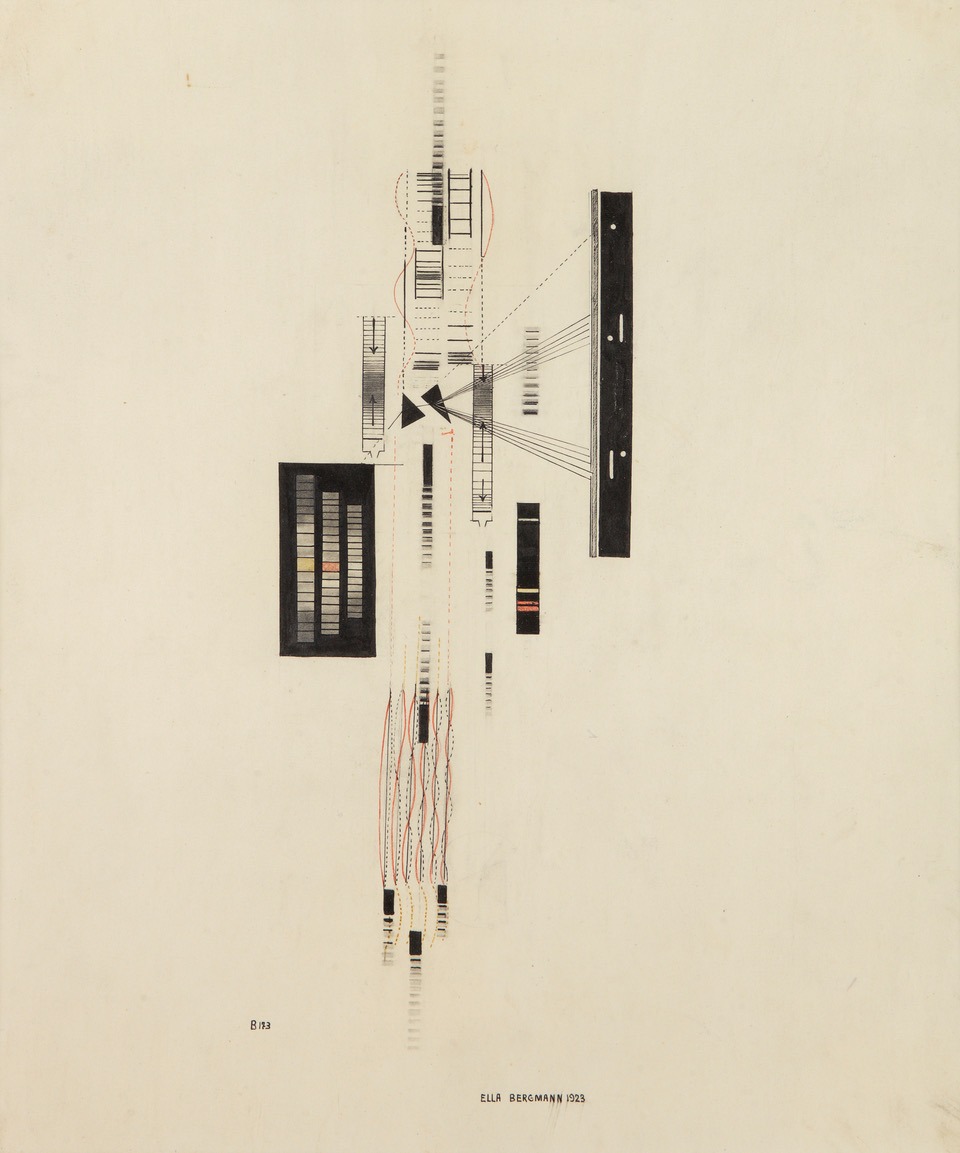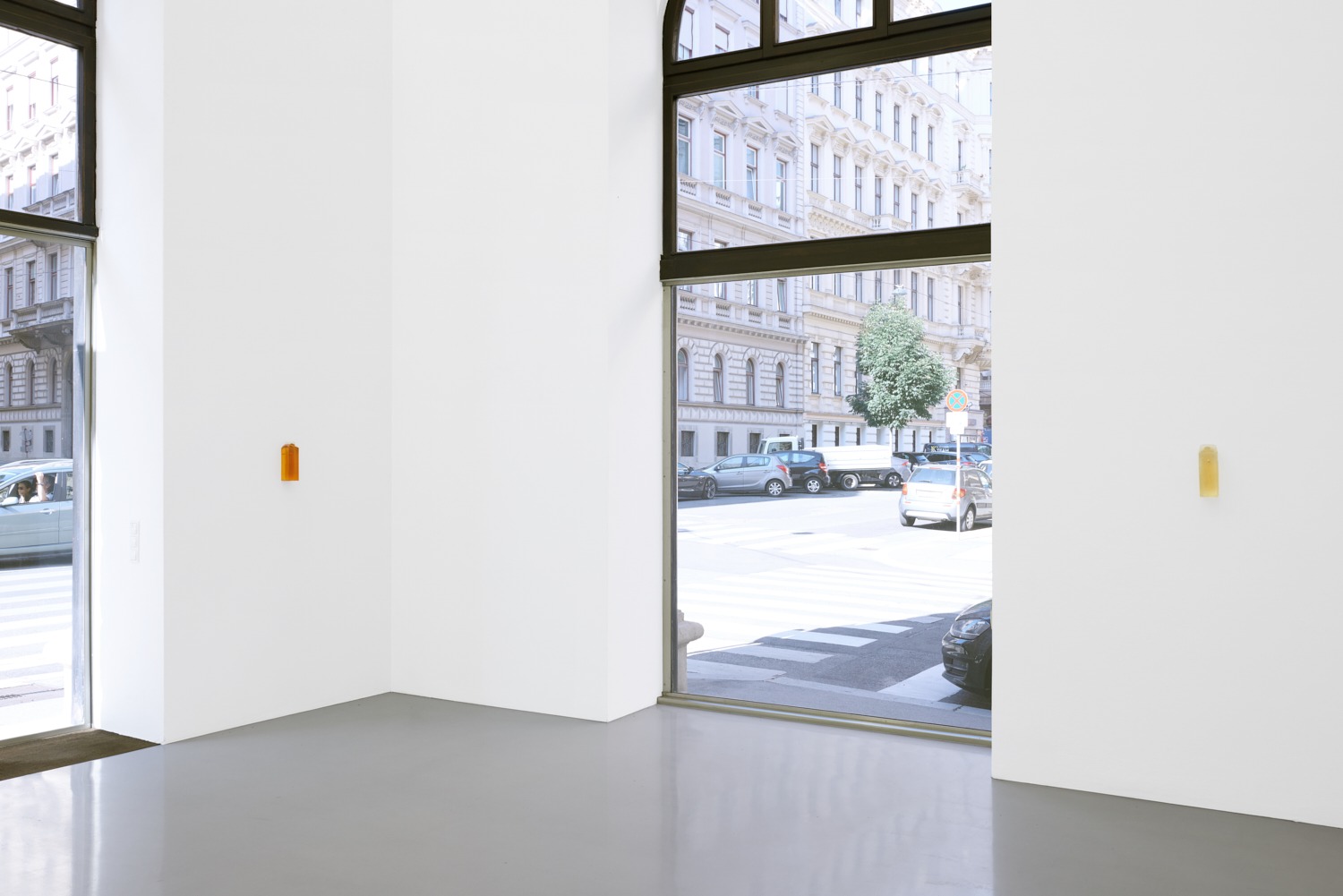Ella Bergmann-Michel, Alan Charlton, Christian (Georges Herbiet), Anita Leisz, Henrik Olesen,
13 Sep - 25 Oct 2019

Ella Bergmann-Michel, Untitled (black light) (B173), 1923
watercolor, gouache, ink, pencil
69,5 x 61,5 cm
watercolor, gouache, ink, pencil
69,5 x 61,5 cm
ELLA BERGMANN-MICHEL, ALAN CHARLTON, CHRISTIAN (GEORGES HERBIET), ANITA LEISZ, HENRIK OLESEN,
FLORIAN PUMHÖSL, AD REINHARDT, WACŁAW SZPAKOWSKI
13 September –25 Octoberr 2019
Curated by Florian Pumhösl
Among the graphic musical scores of the 20th century, such as those by Morton Feldman, György Ligeti or Earle Brown, there are certain situations to be found that come close to the intended idea of an art exhibition. Objects are arranged or layered along one or more horizontal lines, which in turn are assigned to a concept (of duration, volume, instrument, etc.). This temporal axis comprises a spectrum of possible tones, and is itself divided by perpendiculars (though not always). A notation (respectively, its horizontal planes) is always limited to the representation of spectra, that is, there are things that are within and things that are beyond these spectra. The incision on such a spectrum is the bar line, the vertical division that indicates the point in this void when something relative to something else occurs.
The musical score bears an obvious formal resemblance to what is referred to in exhibition architecture as “wall treatment”. And yet – significantly for this exhibition – it provides coordinates for something that seems both imagined and defined, and which occurs along an axis relative to the vertical divisions. The exhibition consists of a selection of pieces by Florian Pumhösl entitled Formed Speech (2016–19), in which he explores the possibilities of defining a vertical object that divides a sequence: the directions it refers to, the imagined space that could emerge in between or before, the convergence of such an object with linguistic signs or figures gleaned from architecture. These pieces form the structure for a series of historical and contemporary work. (Florian Pumhösl)
FLORIAN PUMHÖSL, AD REINHARDT, WACŁAW SZPAKOWSKI
13 September –25 Octoberr 2019
Curated by Florian Pumhösl
Among the graphic musical scores of the 20th century, such as those by Morton Feldman, György Ligeti or Earle Brown, there are certain situations to be found that come close to the intended idea of an art exhibition. Objects are arranged or layered along one or more horizontal lines, which in turn are assigned to a concept (of duration, volume, instrument, etc.). This temporal axis comprises a spectrum of possible tones, and is itself divided by perpendiculars (though not always). A notation (respectively, its horizontal planes) is always limited to the representation of spectra, that is, there are things that are within and things that are beyond these spectra. The incision on such a spectrum is the bar line, the vertical division that indicates the point in this void when something relative to something else occurs.
The musical score bears an obvious formal resemblance to what is referred to in exhibition architecture as “wall treatment”. And yet – significantly for this exhibition – it provides coordinates for something that seems both imagined and defined, and which occurs along an axis relative to the vertical divisions. The exhibition consists of a selection of pieces by Florian Pumhösl entitled Formed Speech (2016–19), in which he explores the possibilities of defining a vertical object that divides a sequence: the directions it refers to, the imagined space that could emerge in between or before, the convergence of such an object with linguistic signs or figures gleaned from architecture. These pieces form the structure for a series of historical and contemporary work. (Florian Pumhösl)



